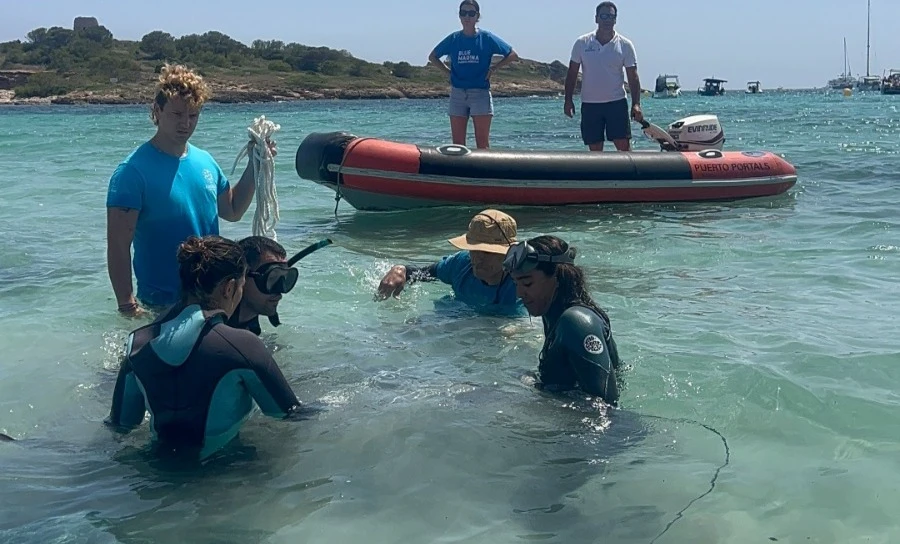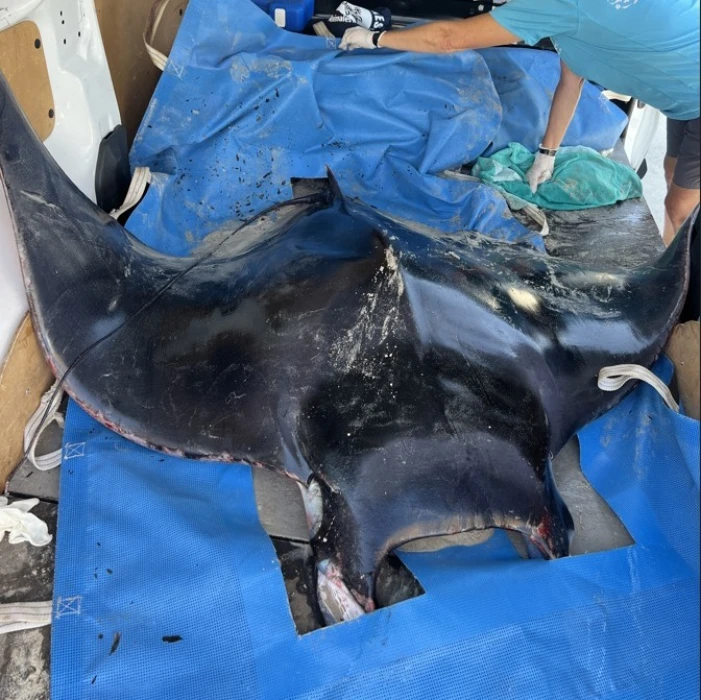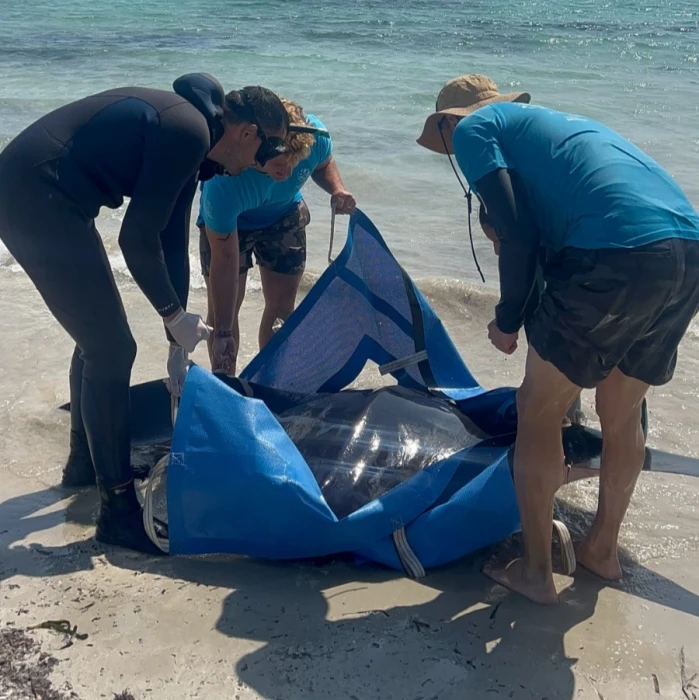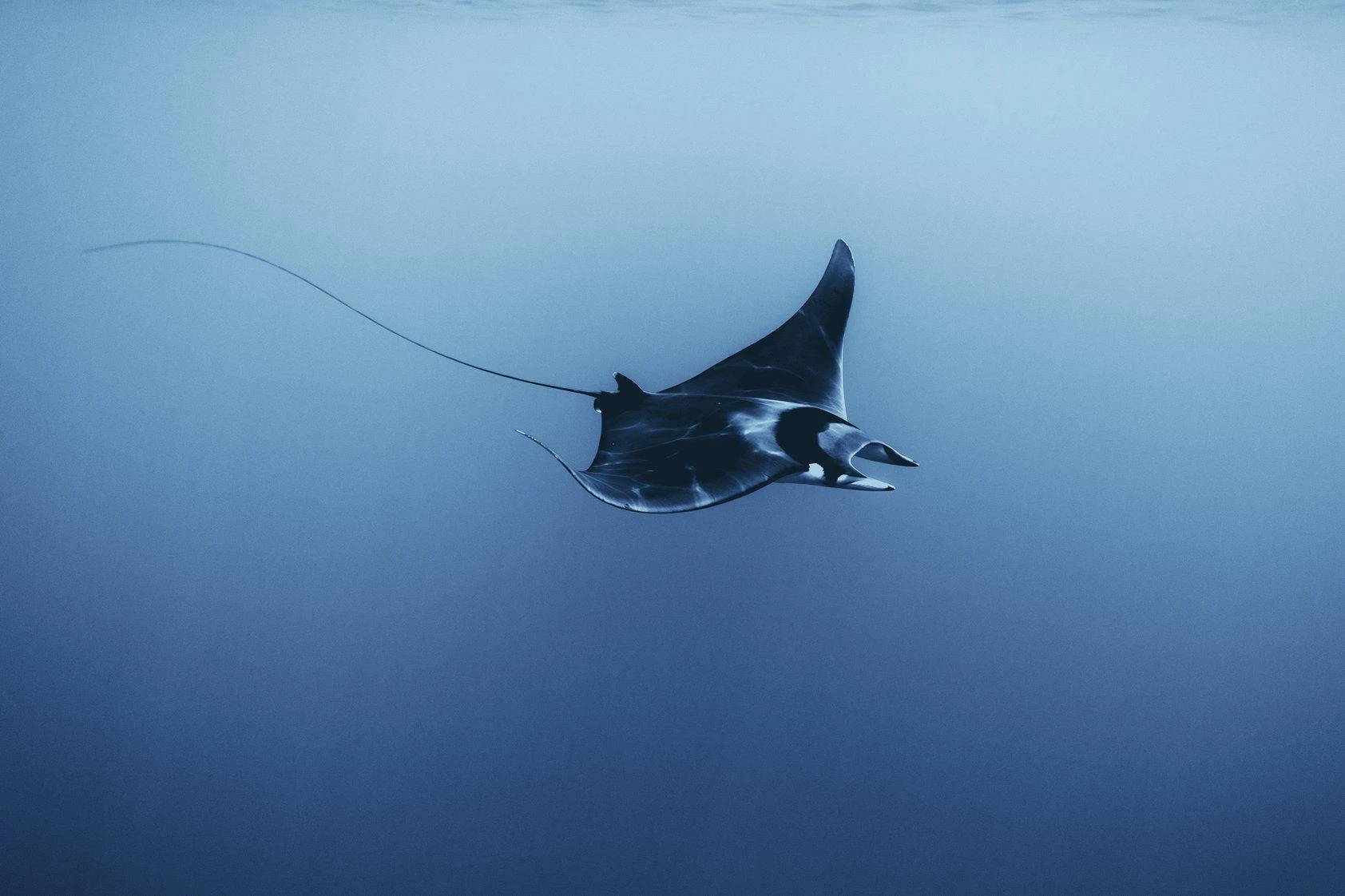Since May, the waters of the Mediterranean have witnessed an extraordinary event: at least 30 strandings of mantas (Mobula mobular) have been recorded at various points along the Spanish coastline, mainly in the Balearic Islands, Catalonia, the Valencian Community and Andalusia.
This phenomenon has sparked concern among marine biologists and conservationists: although the presence of this endangered species in Spanish waters is a common occurrence, what is unusual is the frequency and number of stranded individuals, with some measuring up to just under 3 metres in length.
In the light of recent events, last week saw the creation of a working group, made up of specialists from various organisations based on Spain’s Mediterranean coast, in order to provide a coordinated response to this problem. According to the majority opinion of the experts, the strandings may be due to a combination of factors, as the cases observed to date do not show a defined pattern.
The group has therefore come up with a common action protocol, and various environmental and pathological studies are being carried out to determine the causes that may be contributing to the manta strandings that are currently taking place.

How to tell the difference between a manta and a ray
Although they may seem similar at first glance, there are clear physical and behavioural differences between mantas and rays. The following guide will help you distinguish between them easily:
- Body
Mantas: They have flatter and longer bodies, with large, pointed pectoral fins that allow them to move through the water with ease.
Rays: Their bodies are more rounded or diamond-shaped, with shorter, wider fins. - Size
Mantas: Their wingspan can reach up to 5 metres.
Rays: They can grow up to 2 metres in length. - Feeding
Mantas: They are planktivorous, feeding on plankton and krill found in the water column.
Rays: They are predators, feeding on molluscs, crustaceans and other marine animals that live on the coastal seabed. - Mouth
Mantas: Their mouths are located at the front of the body, with prominent cephalic lobes.
Rays: Their mouths are on the underside of the body and have no lobes. - Tail and sting
Mantas: They have long, slender tails without a venomous sting.
Rays: Their tails have a sting (which may or may not be venomous depending on the species), which they use to defend themselves.


What to do if you spot a manta in distress
If you come across a stranded or distressed manta, it is crucial to act responsibly so as not to worsen its condition or put yourself at risk. Here is a clear action protocol for you to follow:
- Call 112 immediately.
- Do not touch it and keep a safe distance.
- Do not attempt to return it to the sea as this could be harmful for the animal.
- Take photos or videos from a distance to assist the experts with their work.
The appearance of mantas and rays off the Spanish coasts this spring is a phenomenon that deserves attention and study. As citizens and lovers of the sea, it is important to know these species, respect them and protect them, especially at a time when their survival is at stake. At the Palma Aquarium Foundation, we support scientific outreach and coordinated efforts to conserve our marine heritage. In this video you will discover more information from Xisca Pujol, head of the Balearic Marine Fauna Stranding Network.
This study is part of the project for the conservation and protection of endangered marine species, including sea turtles, cetaceans and sharks, in the Balearic Islands (OCEMIB by its Spanish initials). The initiative is supported by the Biodiversity Foundation of the Spanish Ministry for Ecological Transition and the Demographic Challenge (MITECO by its Spanish initials) under the framework of the Recovery, Transformation and Resilience Plan (PRTR by its Spanish initials), financed with European Union's NextGenerationEU funds.
In addition, the service is managed by COFIB, which is part of the Species Protection Services of the Balearic Islands’ Regional Ministry of Agriculture, Fishing and the Environment.





